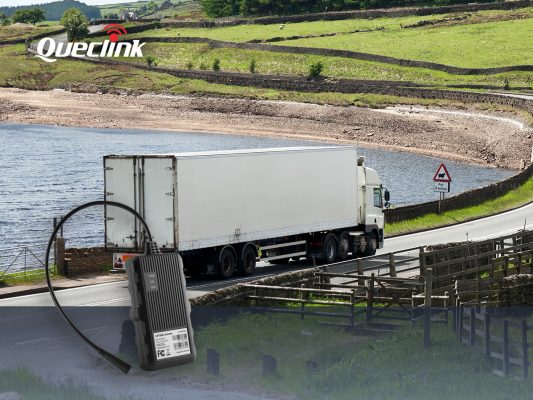Communication efficiency is a key factor in reducing costs and improving operational flow in the transport and logistics industry. Fleet managers across the UK are continually seeking ways to enhance connectivity while reducing overheads. As fleets expand and routes become more complex, the need for a robust, scalable communication system becomes essential. Traditional phone systems are no longer fit for purpose in a fast-paced, geographically dispersed environment.
 Modern alternatives are now available that not only cut costs but also increase the flexibility and responsiveness of communication across depots, offices, and mobile teams. Choosing the right tools and adopting a strategic rollout plan can drastically improve both internal communication and external service delivery.
Modern alternatives are now available that not only cut costs but also increase the flexibility and responsiveness of communication across depots, offices, and mobile teams. Choosing the right tools and adopting a strategic rollout plan can drastically improve both internal communication and external service delivery.
Communication Challenges in Modern Fleet Operations
Transport and logistics businesses face unique communication challenges because of their distributed workforce. Drivers, depot staff, and central offices often rely on a combination of outdated landlines and mobile devices, resulting in fragmented channels and inconsistent messaging.
Each depot typically maintains its own set of phone lines, hardware, and service contracts. This setup generates recurring expenses and complicates system management. Coordination between drivers and back-office teams is often ad hoc, and when communication breaks down, delivery delays and missed updates are common.
This inefficiency can lead to frustration and poor service outcomes. Furthermore, regulatory requirements in the transport sector demand that communication systems remain consistent, secure, and accessible, especially for managing shift patterns and complying with driver safety obligations.
Reducing Costs with a VoIP Telephone System
One of the most effective ways to modernise fleet communication while lowering costs is by implementing a VoIP telephone system. Unlike traditional setups that depend on dedicated phone lines, VoIP (Voice over Internet Protocol) uses the internet to handle voice calls. This approach immediately eliminates the cost of line rentals across multiple locations.
With cloud-based VoIP services, the entire system is managed remotely through secure servers. There is no need for costly hardware installations at each site. Dispatchers, drivers, and office staff can all access the same system through apps on mobile devices, tablets, or desktop computers. This creates a seamless communication network that operates independently of physical location.
Solutions like the one offered by FibreServe’s BT VoIP provide transport companies with smart features including call routing, voicemail to email, and mobile integration. These tools simplify communication between central offices and drivers on the move, while also reducing reliance on personal mobile numbers and inconsistent coverage.
Key Cost-Saving Benefits for Logistics Companies
Beyond reducing line rental fees, VoIP systems eliminate many hidden costs associated with traditional communication infrastructure. Long-distance and mobile charges are either drastically reduced or included in a fixed monthly fee. This provides financial predictability and eliminates variable call expenses that can spiral during busy periods.
Maintenance is another area where savings become immediately apparent. Since there is no local hardware to service or repair, companies no longer need to invest in regular system upkeep. Any upgrades or troubleshooting can be handled remotely by the provider, minimising downtime.
VoIP systems are also scalable. Businesses can add or remove user extensions as needed to accommodate seasonal demand without needing to purchase new physical lines or handsets. This flexibility makes VoIP a particularly strong fit for logistics firms that deal with peak delivery periods.
Implementation Strategy for Smooth Transition
Successfully transitioning to a cloud-based communication system requires clear planning and a structured rollout. The process should begin with a thorough audit of current communication infrastructure. Mapping call volumes, understanding staff workflows, and identifying pain points will guide the choice of features and system configuration.
An internet connection assessment should also take place early on. VoIP systems depend on reliable broadband, and each site must be able to support the number of simultaneous calls expected during peak operations. Planning for backup connectivity is wise, particularly for high-volume depots.
Training is essential. Office teams need to be familiar with the full range of features available to them, while drivers and mobile staff should be confident using VoIP apps on smartphones or tablets. Interactive training modules and support guides can make this process easier and reduce friction during adoption.
A phased rollout strategy can help maintain operational stability. Many firms begin by switching over smaller depots and testing the system under real-world conditions before expanding the rollout to larger sites and head offices.
Measuring Return on Investment
Fleet managers should establish key performance indicators to understand the financial and operational impact of a VoIP upgrade. These may include metrics such as communication costs per vehicle, average call response time, and call transfer efficiency.
Collecting historical data on costs from legacy systems will provide a valuable benchmark. Comparing old expenses against the predictable monthly fees of the new system makes it easier to quantify savings. It’s also helpful to monitor support request volumes and internal satisfaction scores to gauge how the system is performing across the workforce.
Feedback loops between dispatch, drivers, and IT staff can uncover small adjustments that further improve communication quality or reduce manual processes. Continuous evaluation ensures the system continues to meet evolving business needs.
Additional Operational Benefits
Beyond financial gains, cloud-based communication tools offer several practical benefits that improve everyday operations. For example, intelligent call routing allows customer queries to reach the appropriate team member without multiple transfers. Clients can get updates faster, and teams can focus on resolving issues instead of passing messages.
Driver safety is another critical advantage. With a unified system, drivers can contact dispatch quickly during emergencies without relying on personal mobiles. Fast and clear communication can help ensure roadside incidents are resolved promptly and safely.
VoIP systems also integrate with modern fleet management software. This allows dispatchers to call drivers directly from their scheduling dashboards, improving speed and reducing the chance of data entry errors.
During unforeseen disruptions such as network outages or adverse weather, calls can be redirected to other depots or mobile devices, ensuring business continuity and minimising service delays.
Upgrade Your Fleet Communication with Confidence
Adopting a VoIP telephone system represents a smart, future-proof step for any transport business looking to reduce costs and improve performance. By replacing outdated, inflexible phone networks with scalable cloud-based solutions, fleet managers can streamline communication, enhance coordination, and increase service reliability.
If your organisation is still managing separate phone systems across depots or relying heavily on mobile phones for daily updates, now is the time to consider a better approach. With the right planning, support, and training, the transition can be smooth and rewarding, both financially and operationally.



